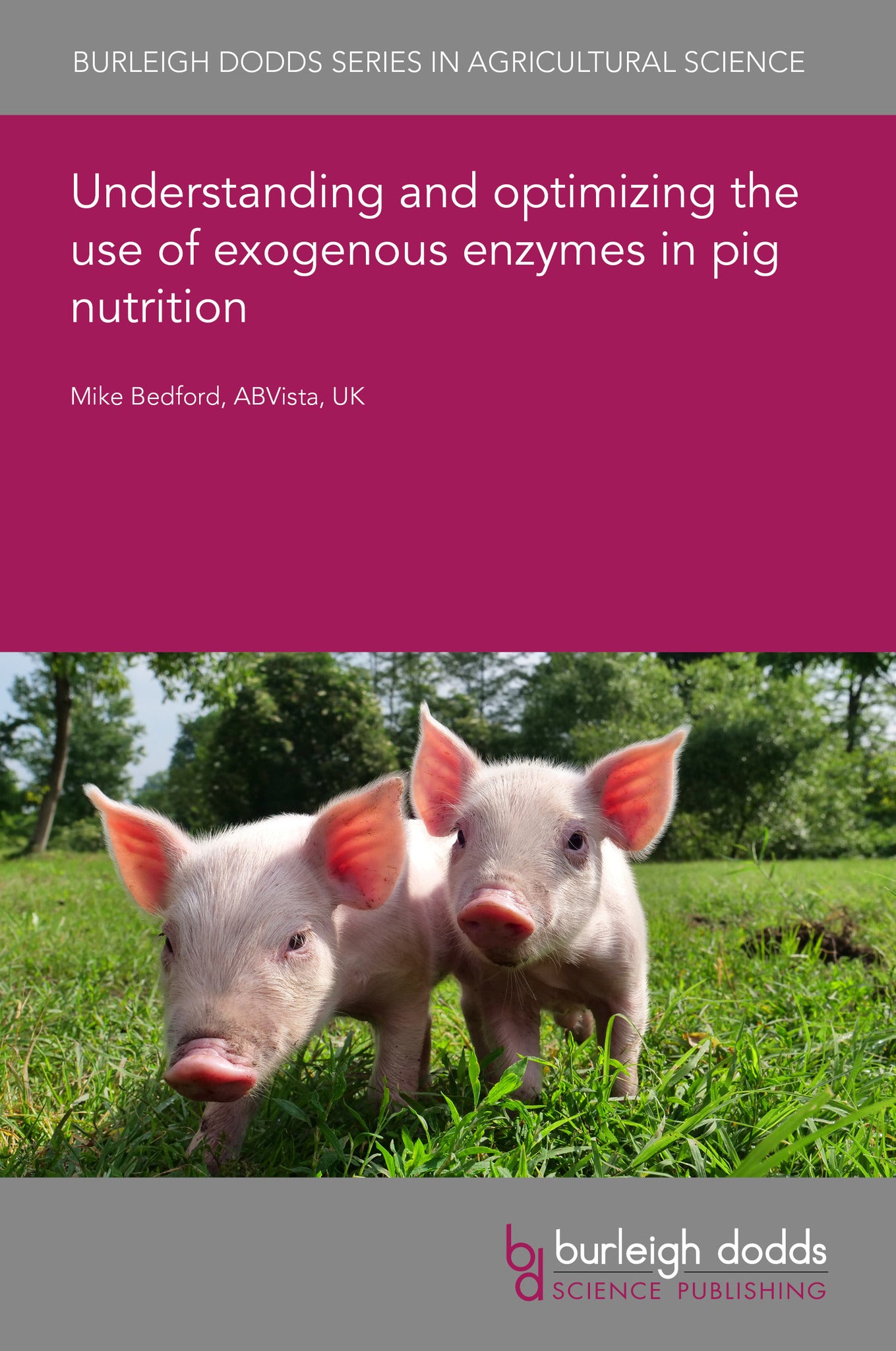We're sorry. An error has occurred
Please cancel or retry.
Understanding and optimizing the use of exogenous enzymes in pig nutrition

Some error occured while loading the Quick View. Please close the Quick View and try reloading the page.
Couldn't load pickup availability
- Format:
-
23 July 2024

For more than 30 years, feed enzymes have been used to reduce ration formulation costs by saving on costly nutrients. In this chapter, the authors discuss how the enzymatic capacity of neonate and mature pigs can be augmented through the addition of protease and amylase in respect to the contrast between weaned and sow-fed piglets. They then turn their attention to the hydrolysis of phytic acid and lower esters, their anti-nutritive effects, and optimising phytate hydrolysis. Following this, they examine the benefits of extraphosphoric activities, including the reduction of endogenous losses, increases in micromineral absorption, reduction in the incidence and severity of post-weaning diarrhoea, and impacts on the parturition of sows. They then consider how fibre degrading enzymes function in pigs and, finally, constraints on enzyme functionality.

TECHNOLOGY & ENGINEERING / Agriculture / Animal Husbandry, Animal husbandry, TECHNOLOGY & ENGINEERING / Agriculture / Sustainable Agriculture, Sustainable agriculture

- 1 Introduction
- 2 Augmenting neonate and mature pig enzymatic capacity
- 3 Phytic acid
- 4 Fibre
- 5 Constraints on enzyme functionality
- 6 Conclusion
- 7 Where to look for further information
- 8 References



